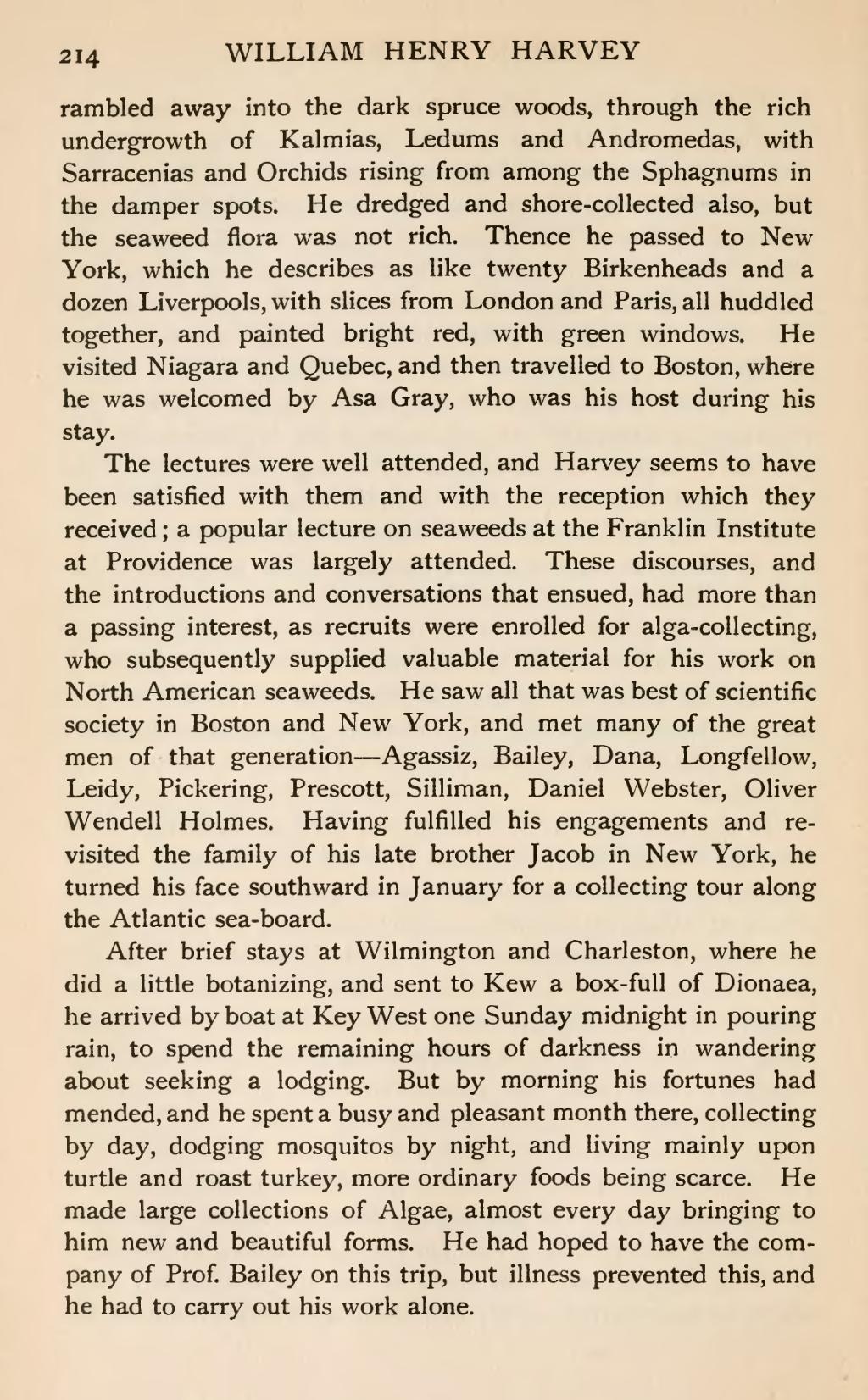rambled away into the dark spruce woods, through the rich undergrowth of Kalmias, Ledums and Andromedas, with Sarracenias and Orchids rising from among the Sphagnums in the damper spots. He dredged and shore-collected also, but the seaweed flora was not rich. Thence he passed to New York, which he describes as like twenty Birkenheads and a dozen Liverpools, with slices from London and Paris, all huddled together, and painted bright red, with green windows. He visited Niagara and Quebec, and then travelled to Boston, where he was welcomed by Asa Gray, who was his host during his stay.
The lectures were well attended, and Harvey seems to have been satisfied with them and with the reception which they received; a popular lecture on seaweeds at the Franklin Institute at Providence was largely attended. These discourses, and the introductions and conversations that ensued, had more than a passing interest, as recruits were enrolled for alga-collecting, who subsequently supplied valuable material for his work on North American seaweeds. He saw all that was best of scientific society in Boston and New York, and met many of the great men of that generation—Agassiz, Bailey, Dana, Longfellow, Leidy, Pickering, Prescott, Silliman, Daniel Webster, Oliver Wendell Holmes. Having fulfilled his engagements and revisited the family of his late brother Jacob in New York, he turned his face southward in January for a collecting tour along the Atlantic sea-board.
After brief stays at Wilmington and Charleston, where he did a little botanizing, and sent to Kew a box-full of Dionaea, he arrived by boat at Key West one Sunday midnight in pouring rain, to spend the remaining hours of darkness in wandering about seeking a lodging. But by morning his fortunes had mended, and he spent a busy and pleasant month there, collecting by day, dodging mosquitos by night, and living mainly upon turtle and roast turkey, more ordinary foods being scarce. He made large collections of Algae, almost every day bringing to him new and beautiful forms. He had hoped to have the company of Prof. Bailey on this trip, but illness prevented this, and he had to carry out his work alone.

